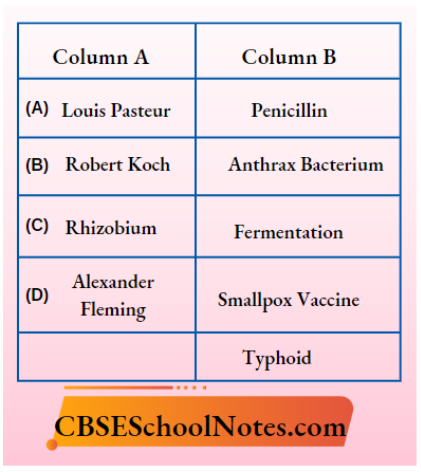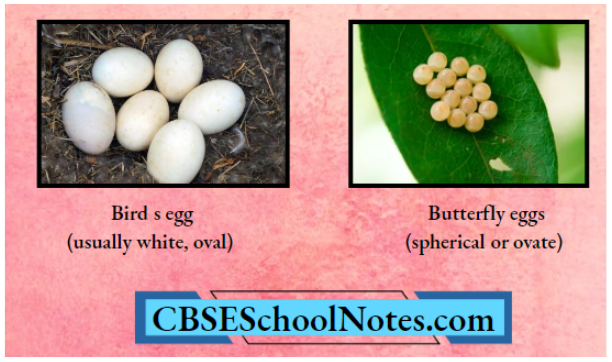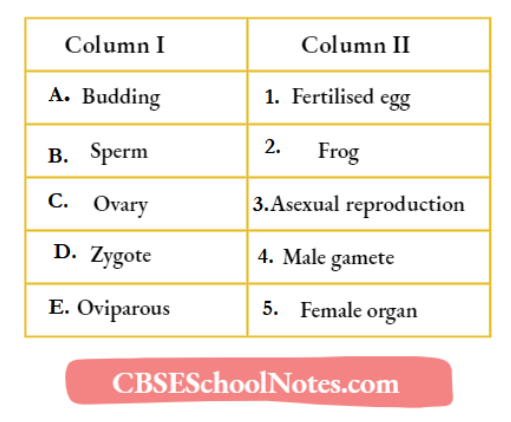CBSE Class 8 Science Chapter 2 Microorganisms: Friend And Foe Ncert Folder Intext Questions
Question 1. Pahell saw that her mother added a little curd to warm milk to set curd for the next day. She wonders why?
Answer: Curd contains several microorganisms, including the bacterium Lactobacillus, which promotes the formation of curd. It gets multiplied in the milk and converts it into curd
Question 2. Why are children or infants given vaccinations?
Answer: When vaccines are introduced into a healthy child’s (or person’s) body, the body fights and kills the invading bacteria by producing suitable antibodies. These antibodies remain in the body, and the child is protected from disease-causing microbes.
Read And Learn More CBSE Class 8 Science Question And Answers
Question 3. How do you prevent the spread of communicable diseases?
Answer: We can prevent the spread of communicable diseases by taking some precautions, Examplekeeping a handkerchief on the nose and mouth while sneezing and keeping a distance from infected persons.
Question 4. Why does the teacher keep telling the students not to let water collect anywhere in the neighbourhood?
Answer: We should not let water collect anywhere in the neighbourhood because all mosquitoes breed in the water and spread diseases like malaria.
Question 5. Paheli wonders how food can become a ‘poison’?
Answer: Microorganisms that grow on our food sometimes produce toxic substances, which make the food poisonous, causing serious illness and even death.
Question 6. Why does the milk that comes in packets not spoil? What is pasteurisation?
Answer: The milk that comes in packets does not spoil because it is pasteurised milk. It can be consumed without boiling as it is free from harmful microbes. Pasteurisation is a process in which milk is heated to about 70°C for 15-30 seconds and then suddenly chilled and stored. This prevents the growth of microbes. This process was discovered by Louis Pasteur.
Question 7. Can microorganisms be seen with the naked eye? If not, how can they be seen?
Answer: Microorganisms or microbes are too small to be seen by the naked eye. They can be seen with the help of a magnifying glass or microscope.
Question 8. What are the major groups of microorganisms?
Answer: Microorganisms are divided into four major groups, which are as follows
- Bacteria are single-celled organisms having a rigid cell wall like plant cells. Diseases like typhoid and tuberculosis (TB) are caused by bacteria.
- Fungi are non-green organisms that obtain their food from dead organic matter.
- Protozoa are unicellular animals that cause diseases like malaria and dysentery.
- Algae are a photoautotrophic organism that may be unicellular or multicellular.
Question 9. Name the microorganisms that can fix atmosphorlc nitrogen in the soil.
Answer: Bacteria such as Rhizobium and certain blue-green algae (Anabaena, Nosloe) present in the soil can fix atmospheric nitrogen and convert it into usable nitrogenous compounds.
Question 10. Write 10 lines on the usefulness of microorganisms in our lives.
Answer: Microorganisms are useful to humans and plants in the following ways
- They are used in the preparation of food items such as pieces of bread.
- Bacteria are used in the conversion of milk into curd.
- They are used for the large-scale production of alcohol, wine, and acetic acid.
- Several medicines, such as antibiotics, are being productÿ by bacteria and fungi.
- They are used to check microbial infections in animals.
- Vaccines are made by dead or weakened microbes.
- Some bacteria and blue-green algae increase the soil fertility by fixing atmospheric nitrogen.
- They decompose the dead organic wastes of plants and animals.
- They are used in the cleaning up of the environment.
- Certain microbes are also used in the biological treatment of sewage and industrial effluents.
Question 11. Write a short paragraph on the harmful effects of microorganisms.
Answer: Microorganisms are harmful to human beings in many ways. They cause diseases in humans, plants and animals. For example, in humans, bacteria cause diseases such as cholera, typhoid, tuberculosis, etc.
In cattle, the foot and mouth disease is caused by a virus. Also, several microbes cause diseases in plants, for Example, Citrus canker disease, and late blight of potato. Some microbes grow on food and secrete toxic substances which make the food poisonous.

Class 8 Science Chapter 2 Fill In The Blanks
Question 1. Microorganisms can be seen with the help of a __________.
Answer: Microscope
Question 2. Blue-green algae fix ________directly from the air and enhance the fertility of soil.
Answer: Nitrogen
Question 3. Alcohol is produced with the help of _________.
Answer: Yeast
Question 4. Cholera is caused by ________.
Answer: Bacteria
Question 5. All microorganisms are classified into major ______ groups.
Answer: Four
Question 6. Paramecium is a slipper-shaped _____.
Answer: Protozoan
Question 7. Alexander Fleming discovered mould _______.
Answer: Penicillin
Question 8. Pathogens are ________ causing organisms.
Answer: Disease
Question 9. ______ could be due to the consumption of food spoiled by some microorganisms
Answer: Food Poisoning
Question 10. The process in which sugar is converted into alcohol is called __________.
Answer: Fermentation
Question 11. _________is a process of heating the milk at high temperature, then cooling it suddenly and storing it.
Answer: Pasteurisation
Question 12. ___________ is the vector of the dengue virus
Answer: Aedes

Class 8 Science Chapter 2 True Or False
Question 1. Microorganisms can be seen with the naked eye.
Answer: False, microorganisms are very small and cannot be seen by nthe aked eye. They can be seen with the help of a microscope.
Question 2. Microorganisms can be found only in air and water.
Answer: False, microorganisms are found everywhere in the air, water, inside our body, etc.
Question 3. Viruses can only multiply in a living cell.
Answer: True
Question 4. All microbes are disease-causing.
Answer: False, some microbes are useful, for example, Lactobacillus.
Question 5. Microorganisms are also used in the cleaning up of the environment.
Answer: True
Question 9. Jams, jellies and squashes are preserved by adding salt.
Answer: False
Question 10. The atmospheric nitrogen cannot be utilised by the living organisms.
Answer: True
Question 11. Viruses can be seen by simple microscopes.
Answer: False
CBSE Class 8 Science Chapter 2 Match The Columns
Question 1. Match the microorganisms given in Column 1 to the group to which they belong in Column 2.

Answer: A-4, B-3, C-1, D-2
Question 2. Match the Items given In Column 1 with those of Column 2

Answer: A-4, B-5, C-1, D-2, E-3
Question 3. Match the names of scientists given in Column 1 with the discovery made by them given in Column 2.

Answer: A-3, B-2, C-4, D-1
Question 4. Match the organisms in Column A with their action in Column B.

Answer: A-(5), B-(1), C-(2), D-(3), E-(4), F-(5)
Question 5. Match Column I with Column II.

Answer: A-6, B-5.C-7, D-4, E-3, F-2.G-1
Class 8 Science Chapter 2 Microorganisms: Friend And Foe
The following questions consist of two statements: Assertion (A) and Reason (R). Answer these questions by selecting the appropriate option given below
- Both A and R are true, and R is the correct explanation of A
- Both A and R are true, but R is not the correct explanation of A.
- A is true, but R is false
- A is false, but R is true.
Question 1.
- Assertion (A) Lactobacillus converts curd into milk.
- Reason (R) The conversion of milk into curd is known as fermentation.
Answer: 4. A is false, but R is true. A can be corrected as Lactobacillus converts milk into curd.
Question 2.
- Assertion (A) Streptomycin and tetracycline are examples of antibiotics.
- Reason (R) Antibiotics help in the growth of disease-causing microorganisms.
Answer: 3. A is true, but R is false. R can be corrected as Antibiotics are the medicines that kill or stop the growth of disease-causing microorganisms.
Question 3.
- Assertion (A) Sodium benzoate and sodium metabisulfite are common preservatives.
- Reason (R) They are used to control the growth of microbes.
Answer: 1. Both A and R are true, and R is the correct explanation of A.
Question 4.
- Assertion (A) Pasteurised milk cannot be consumed without boiling.
- Reason (R) Pasteurised milk is free from microorganisms.
Answer: 4. A is false, but R is true. A can be corrected as Pasteurised milk can be consumed without boiling.
Question 5.
- Assertion (A) Rhizobium is an example of a nitrogen-fixing bacterium.
- Reason (R) This bacterium converts nitrogen compounds into nitrogen gas.
Answer: 3. A is true, but R is false. R can be corrected as Rhizobium bacteria convert nitrogen gas into nitrogenous compounds, which are utilised by plants.
The following questions consist of two statements: Assertion (A) and Reason (R); Answer these questions by selecting the appropriate option given below.
- Both A and R are true, and R is the correct explanation of A.
- Both A and R are true, but R is not the correct explanation of A.
- A is true, but R is false.
- A is false, but R is true
Question 1.
- Assertion (A) Antibiotics are effective against cold and flu
- Reason (R) Cold and flu are caused by a virus.
Answer: 4. A is false, but R is true
Question 2.
- Assertion (A): Decomposers clean the environment.
- Reason (R) They decompose the harmful dead and decaying remains of plants and animals.
Answer: 1. Both A and R are true, and R is the correct explanation of A.

![]()









































